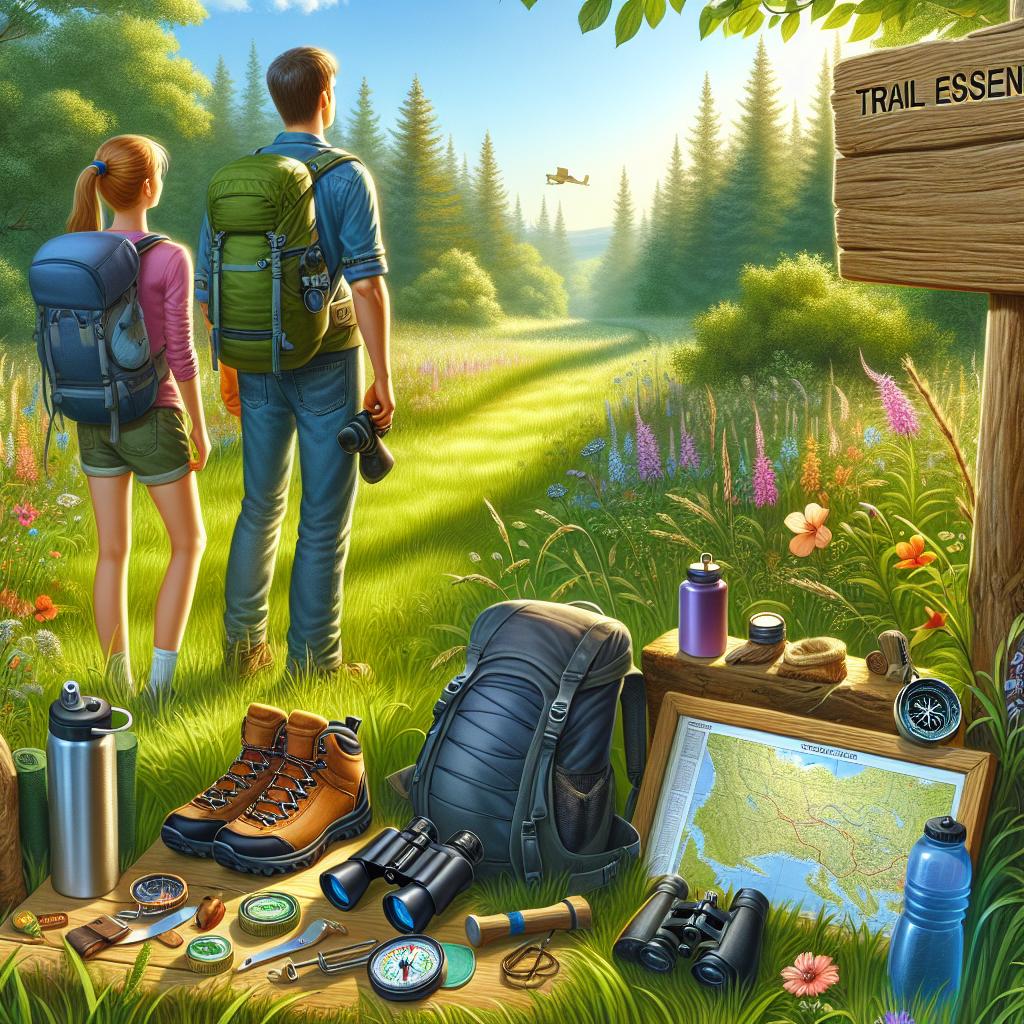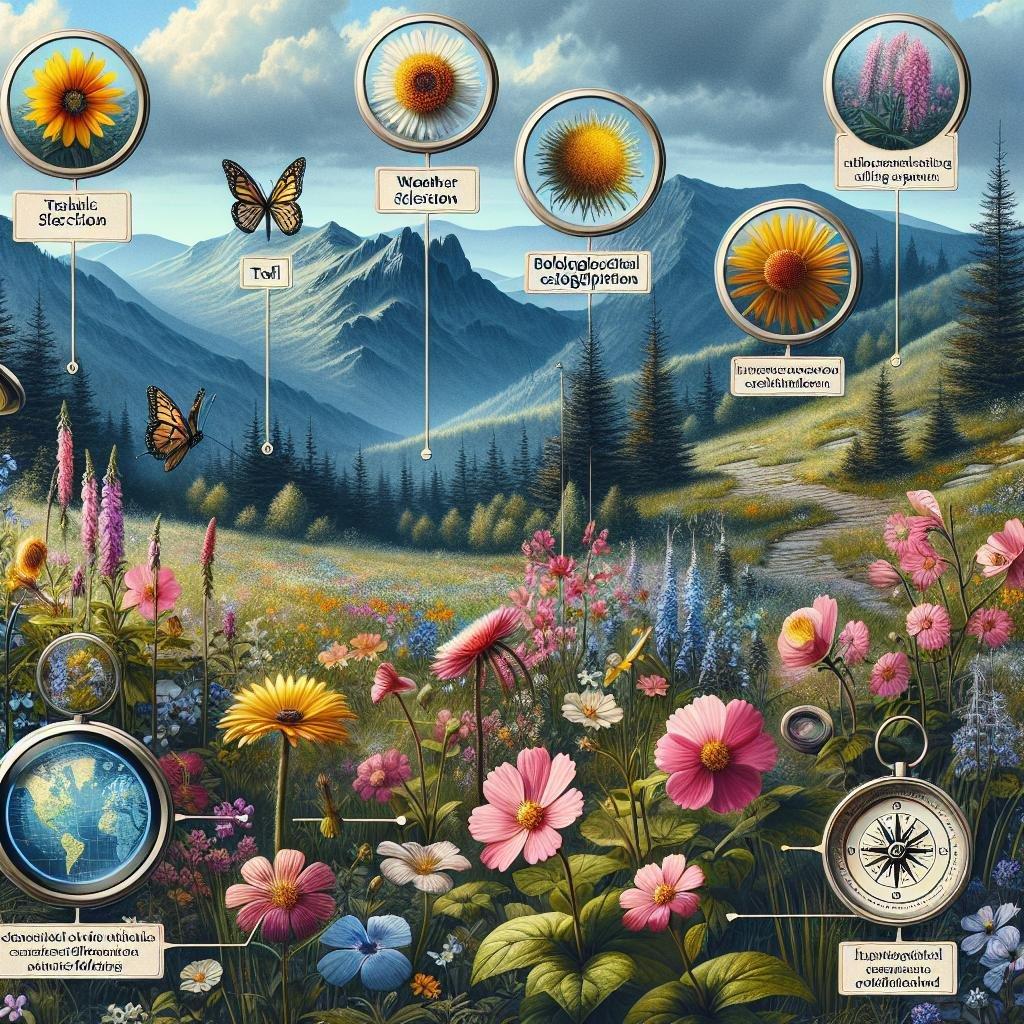As winter’s final frost recedes and the Smoky Mountains awaken from their cold slumber, a verdant symphony of budding flowers and vibrant greenery heralds the long-awaited arrival of spring. Among the most enchanting sights this season offers are the wildflowers, blanketing the rugged trails in a kaleidoscope of colors and fragrances. Whether you’re a seasoned hiker or a curious newcomer, selecting the perfect trail can transform a simple hike into a mesmerizing journey through nature’s finest artwork. This guide will explore how to choose the best hiking trails for encountering the breathtaking wildflowers that grace the Smokies in spring, ensuring your adventure is as unforgettable as the blooms themselves.
Discovering Hidden Gems: Trail Selection for Bloom Enthusiasts
When exploring the Smoky Mountains’ lush landscapes, it’s essential to select trails that promise the best “bloomtastic” views. Seek out paths that align with peak blooming seasons. For a spectacular start, consider trails at lower elevations during early spring. These typically offer an early burst of wildflower variety. As the season progresses, mid-to-high elevation trails will steal the spotlight, presenting an explosion of color and fragrance. Trails such as the Little River Trail, Porters Creek Trail, and Rich Mountain Loop are renowned for their vibrant spring displays.
Here are some key factors to consider while picking your floral trail adventure:
- Elevation: Low elevation trails bloom earlier; higher trails peak later.
- Trail Difficulty: Choose based on your fitness level and time availability.
- Floral Diversity: Look for trails that offer varied ecosystems for a wider flower array.
- Accessibility: Consider proximity to trailheads and parking facilities.
Below is a quick reference table for popular trails and their bloom highlights:
| Trail Name | Elevation | Bloom Period |
|---|---|---|
| Little River Trail | Low | Early Spring |
| Porters Creek Trail | Mid | Mid Spring |
| Rich Mountain Loop | High | Late Spring |

Timely Blooms: Understanding Peak Spring Wildflower Seasons
The Smoky Mountains are a breathtaking tapestry of flora during spring, revealing a vibrant maze of hiking trails. To uncover this natural spectacle, it’s essential to visit during the peak bloom periods, typically from late March through early May. If you’re looking for immersive floral experiences, consider Porters Creek Trail, known for its carpets of yellow trillium and white fringed phacelia, or Little River Trail, where the blooms of bloodroot and hepaticas brightens up the path. Each trail offers a unique floristic adventure, where the charm of the ephemeral wildflowers invites hikers into nature’s ever-changing artistry.
To streamline your floral hike planning, keep an eye on these crucial factors:
- Altitude: Higher elevation trails bloom later.
- Weather Patterns: Mild winter fosters early blooms.
- Trail Type: Shadier trails often have richer wildflower displays.
Here are some premier spots and their floral highlights:
| Trail | Peak Bloom Period | Signature Flowers |
|---|---|---|
| Porters Creek Trail | Late March - April | Yellow Trillium, White Fringed Phacelia |
| Little River Trail | April | Bloodroot, Hepaticas |
| Brushy Mountain Trail | April – Early May | Fire Pinks, Jack-in-the-pulpit |

Trail Essentials: Gear and Preparation Tips for Wildflower Hikes
Embarking on a wildflower hike in the Smokies requires both the right gear and adequate preparation. Start with a lightweight, moisture-wicking outfit to keep you comfortable during varying spring temperatures. Don’t forget a wide-brimmed hat and UV-protective sunglasses to shield yourself from the sun. Preparing for unpredictable weather is also key, so pack a waterproof jacket in your daypack. For your feet, invest in sturdy hiking boots with strong ankle support to navigate the sometimes uneven trails. Of course, your essentials should include a trail map, a fully charged phone, and a reliable GPS device in case you need to track your location. A first-aid kit and a compact emergency blanket are must-haves for any inclement situations.
Having the right gear ensures your safety and enhances your experience, but careful planning is equally crucial. Hydration is paramount, so bring along a hydration reservoir or multiple water bottles to stay quenched. Packing lightweight, high-energy snacks such as granola bars, nuts, and dried fruits can keep your energy levels up without weighing you down. For optimal trail navigation, consider using All-in-One SEO Pack to download detailed trail guides. When hiking in the Smokies, paying attention to peak blooming times for wildflowers can significantly enhance your hike. Consult local guides and park rangers for insight into what’s blooming when. Remember, preservation is key, so always follow Leave No Trace principles to keep the wildflower habitats pristine for fellow enthusiasts.
| Item | Purpose |
|---|---|
| Waterproof Jacket | Protection from rain |
| Trail Map | Navigation |
| First-aid Kit | Emergency readiness |
| Moisture-wicking Outfit | Comfort |

Top Smokies Trails: Recommendations for Vibrant Spring Blossoms
Exploring the vibrant tapestry of wildflowers in the Smoky Mountains is a must for any springtime hiker. To experience nature’s colorful burst at its finest, consider trails such as the Porters Creek Trail. This path offers a gentle trek through lush forests, leading to Fern Branch Falls, with wildflower varieties like trillium and jack-in-the-pulpits blanketing the path. Another captivating option is the Little River Trail, where you’ll encounter a scenic riverside journey adorned with violets, bloodroot, and yellow trillium. For those looking for something uniquely picturesque, the Spence Field Loop provides an elevated wildflower show, with numerous species nestled amidst meadows and rich foliage.
- Porters Creek Trail: Best for trilliums and peaceful forest sceneries
- Little River Trail: Ideal for riverside views and diverse floral displays
- Spence Field Loop: Perfect for those seeking higher altitudes and meadow blooms
| Trail Name | Distance | Key Highlights |
|---|---|---|
| Porters Creek Trail | 4.0 miles (round trip) | Trilliums, Jack-in-the-pulpits, Fern Branch Falls |
| Little River Trail | 6.0 miles (round trip) | Violets, Bloodroot, Yellow Trillium |
| Spence Field Loop | 10.3 miles (round trip) | Meadow blooms, Elevated views |
Q&A
Q&A: How to Choose the Best Hiking Trails for Spring Wildflowers in the Smokies
Q: What makes the Smokies a prime destination for spring wildflowers?
A: The Great Smoky Mountains are renowned for their incredible biodiversity, particularly when it comes to spring wildflowers. The mix of varying elevations, moist climate, and rich soil creates a perfect habitat for a dazzling array of wildflower species. From tranquil valleys to high-altitude ridges, the Smokies offer an ever-changing floral landscape that awakens each spring with vivid colors and fragrant blooms.
Q: When is the best time to hike the Smokies for wildflower viewing?
A: The ideal season for wildflower hikes in the Smokies usually stretches from late March to early May. Peak bloom times can vary depending on the altitude and specific weather conditions each year. Always check local botanical calendars or park ranger updates for the most accurate blooming forecasts.
Q: What are some essential factors to consider when selecting a hiking trail for wildflower viewing?
A: When choosing a trail, consider these key factors:
- Trail Difficulty: Evaluate your fitness level and hiking experience. The Smokies offer trails ranging from easy, family-friendly paths to strenuous, challenging routes.
- Elevation: Lower elevations bloom earlier in the season, while higher elevations showcase wildflowers later in spring.
- Habitat Diversity: Some trails traverse multiple habitats, increasing your chances of encountering a wide variety of wildflowers.
- Access and Amenities: Look for trails with convenient access points and nearby amenities, such as restrooms and parking.
Q: Can you recommend some top trails for spring wildflowers in the Smokies?
A: Absolutely! Here are a few standout trails:
- Porters Creek Trail: This moderate trail offers a vibrant showcase of wildflowers like fringed phacelia and white trillium. You’ll also encounter historic farmsteads and serene forest settings.
- Little River Trail: An easier hike that winds alongside a picturesque river, boasting stunning displays of trout lilies and bloodroot.
- Gregory Ridge Trail: For experienced hikers, this more strenuous trail rewards with a profusion of blooms and panoramic views from Gregory Bald.
- Appalachian Trail (Newfound Gap to Charlies Bunion): A segment of the famous AT, this hike traverses varying elevations and delivers a diverse array of wildflowers, especially in mid to late spring.
Q: How can hikers ensure they have a safe and enjoyable experience while observing wildflowers?
A: Safety and enjoyment go hand in hand with preparation and respect for nature:
- Gear Up: Wear sturdy hiking boots, bring plenty of water, snacks, a map, and weather-appropriate clothing.
- Leave No Trace: Avoid picking wildflowers and stick to marked trails to preserve the natural beauty for others and prevent ecological disruption.
- Know Your Limits: Choose trails that match your physical capabilities and take regular breaks to enjoy the flora and fauna.
- Check Weather Conditions: Spring weather can be unpredictable. Always check forecasts and trail conditions before your hike.
Q: Are there any guided tours or special events focused on spring wildflowers in the Smokies?
A: Indeed! The Smokies often host guided wildflower hikes and special events, like the Spring Wildflower Pilgrimage, a multi-day celebration with walks, workshops, and presentations led by experts in botany, wildlife, and photography. Participating in such events can enrich your understanding and appreciation of the region’s floral wonders.
Q: What resources are available for hikers to learn more about the wildflowers they encounter?
A: Several excellent resources can enhance your wildflower exploration:
- Field Guides: Books like “Wildflowers of the Smokies” by Peter White offer detailed descriptions and photos.
- Apps: Mobile apps such as iNaturalist and Seek can help identify species in real-time.
- Visitor Centers: Park visitor centers provide maps, brochures, and knowledgeable staff who can offer trail recommendations and answer questions.
By considering these tips and resources, you’ll be well on your way to selecting the best hiking trails for a memorable spring wildflower experience in the Smokies. Happy hiking!
The Way Forward
As you lace up your hiking boots and prepare to step into the vibrant tapestry of spring in the Smokies, let the trails guide your journey into nature’s living masterpiece. Each path you take promises a unique dance of wildflowers, from the serene blues of the forget-me-nots to the lively yellows of the trilliums, offering an ever-changing panorama of seasonal splendor.
Choosing the best trails, whether it’s a well-trodden path or a hidden gem off the beaten track, becomes part of the adventure. With every careful step and thoughtful choice, you weave your story into the rich fabric of these ancient mountains. Allow the melodic whispers of the Great Smoky Mountains to sing you into a springtime reverie where discovery is ceaseless and the beauty of nature unfolds in blossoms of endless wonder.
Happy hiking, and may your journey through the floral wonders of the Smokies be as unforgettable and inspiring as the spring wildflowers themselves.

